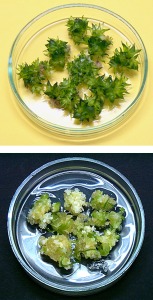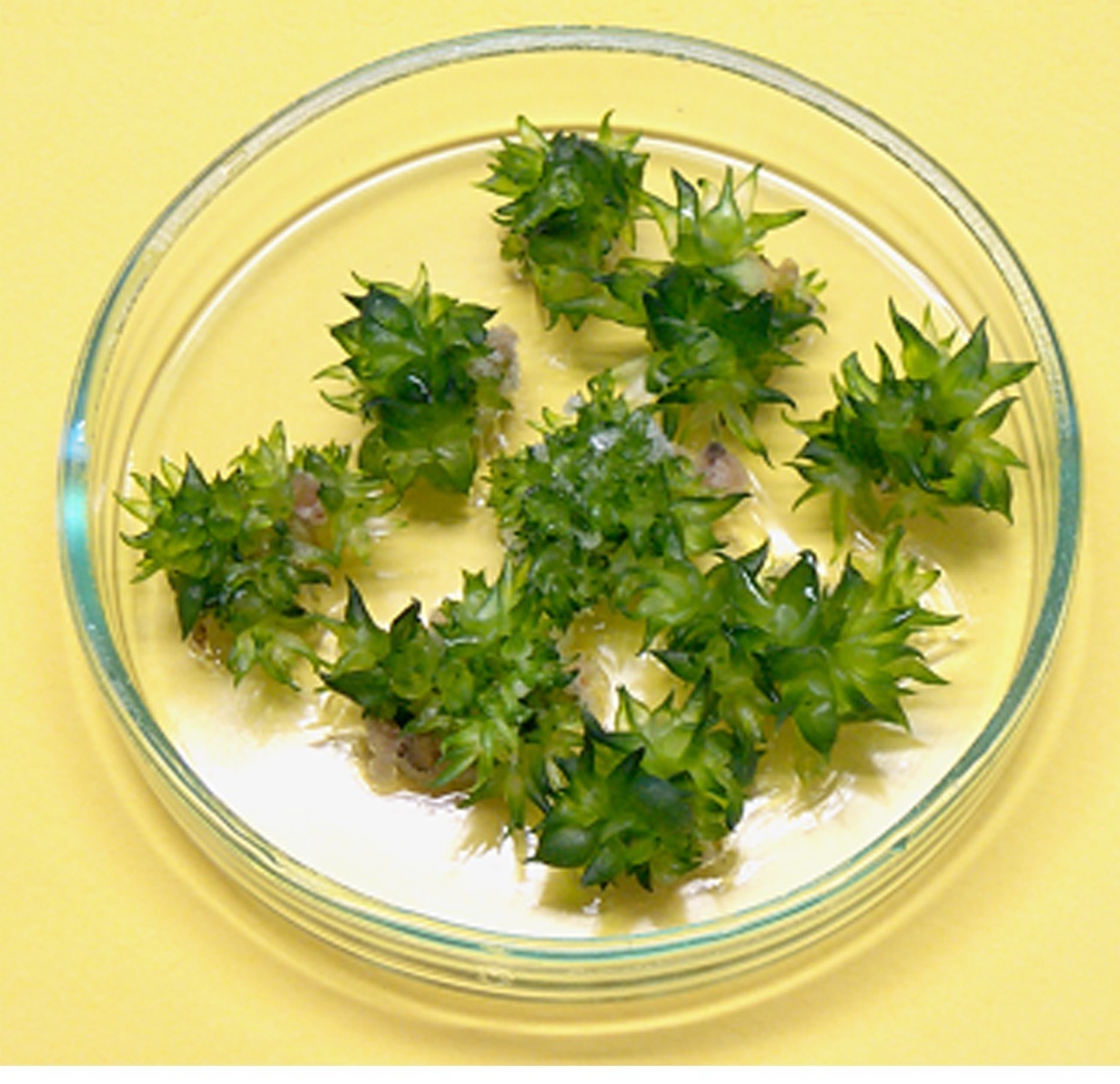
In vitro cultures at the Institute of Cell Biology and Genetic Engineering, in Kiev, Ukraine showed enough biodiversity to serve as a faster, cheaper and more stable alternative to intact plants for natural product screening.
Humans have been making use of plants for as long as there have been humans and plants. The actual cultivation of plants for food and other products began with the Neolithic Revolution some 12,000 years ago and has been evolving ever since. Products derived from plants today span a wide range of applications, encompassing foods, materials, medicines, fuels and so on. Despite all of our technological advances, however, screening plants for potential products is still primarily done the old fashioned way – growing intact plants in nature, botanical gardens or greenhouses then subjecting them to tests. Conventional wisdom has held this to be the only way it can be done as in vitro cultures lack the ability to accumulate specific compounds that can be found in intact plants. As often proves to be the case, conventional wisdom appears to be wrong.
Tamas Torok, a microbiologist with Berkeley Lab’s Earth Sciences Division, served as the principal investigator for an international collaboration that demonstrated in vitro biodiversity is sufficiently broad enough to be used for natural plant product screening. In a study conducted at the Institute of Cell Biology and Genetic Engineering, in Kiev, Ukraine, the collaboration carried out reproducible screening and genomic analysis for insecticidal and fungicidal activity on 1,200 of the more than 2,000 plant cell lines the Institute maintains in culture. The screening of these cell lines, which represent diverse geographic regions, climates and soil and growing conditions, revealed a wealth of natural compounds with potential applications for crop improvement and protection.
“Screening in vitro cultures for biological activity is much faster and more economical than working with intact plants, and also provides much greater stability in the source material,” Torok says. “Plants in nature may change over time while cell and tissue cultures are maintained under highly controlled conditions. As an additional benefit, endangered plant species do not need to be sampled time and again.”
The results of this study have been reported in Industrial Biotechnology in a paper titled “Screening Plant Biodiversity In Vitro for New Natural Products.” In addition to Torok, other authors are Nikolay Kuchuk, Valeria Belokurova, Nadia Matvieieva, Anton Peterson, Maksym Yu Vasylenko, Irina Kurchenko, Lubov Kurbatova and Jennie Hunter-Cevera.
In their Industrial Biotechnology paper, the authors report that “plants, including rare species, can be collected in very small quantities, introduced into in vitro culture, and propagated into quantities sufficient for any kind of screening.” Kuchuk, the lead author, spent months at Berkeley Lab working with Torok, who likewise, made several trips to Kiev during the course of the study.
This research was sponsored by the U.S. Department of Energy Global Initiatives for Proliferation Prevention (GIPP) program through the Science and Technology Center in Ukraine.
# # #
Lawrence Berkeley National Laboratory addresses the world’s most urgent scientific challenges by advancing sustainable energy, protecting human health, creating new materials, and revealing the origin and fate of the universe. Founded in 1931, Berkeley Lab’s scientific expertise has been recognized with 13 Nobel prizes. The University of California manages Berkeley Lab for the U.S. Department of Energy’s Office of Science. For more, visit www.lbl.gov
DOE’s Office of Science is the single largest supporter of basic research in the physical sciences in the United States, and is working to address some of the most pressing challenges of our time. For more information, please visit the Office of Science website at science.energy.gov/.
